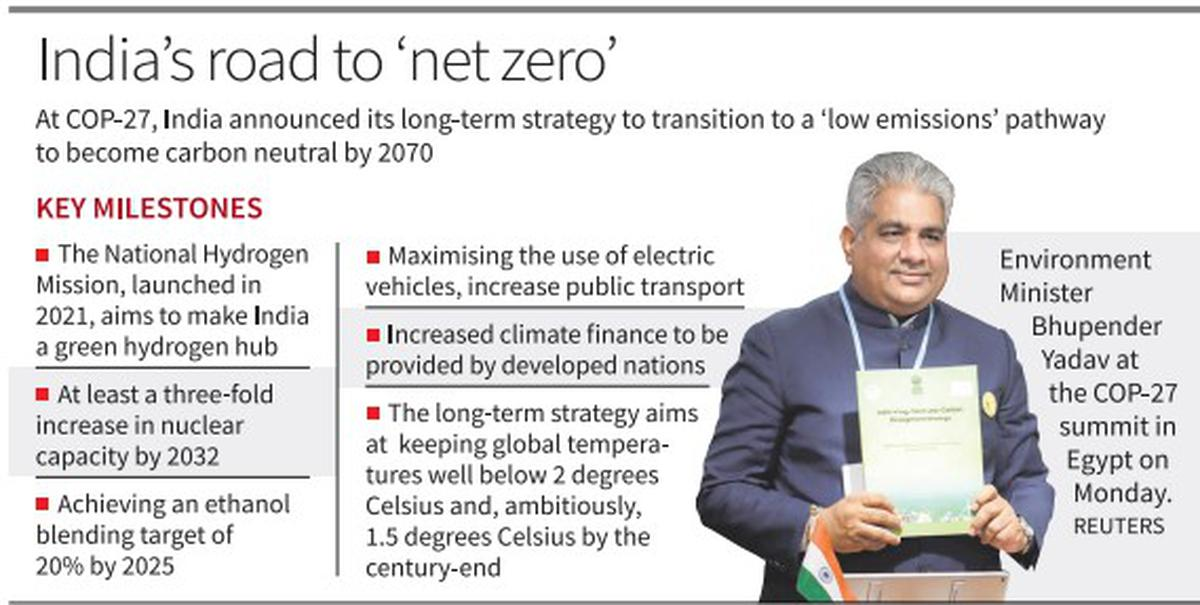India’s Sustainable Path to Net-Zero by 2070
Why in the news?
India’s ambitious net-zero goal by 2070 faces challenges like surging energy demand, land-use constraints, and resource limitations, requiring innovative strategies amid global climate action discussions at COP-29.
Net-Zero Commitments and Challenges:
- India has pledged to achieve net-zero emissions by 2070 to combat climate change.
- However, this path involves challenges such as limited financial resources, land, and water availability.
- Global temperature rise is currently 1.1°C above pre-industrial levels, and limiting it to 1.5°C is essential to prevent catastrophic impacts.
- India’s per-capita emissions are among the lowest globally, but the wealthiest 10% contribute disproportionately.
- Climate impacts are harsher on economically weaker sections.
National Action Plan on Climate Change (NAPCC):
- Raises awareness about climate change among stakeholders, including public, government, industry, and communities.
- Includes eight national missions:
- Solar Mission
- Enhanced Energy Efficiency
- Sustainable Habitat
- Water Mission
- Himalayan Ecosystem
- Green India
- Sustainable Agriculture
- Strategic Knowledge
COP26 Commitments (“Panchamitra”)
- 500 GW non-fossil energy capacity by 2030.
- 50% energy from renewables by 2030.
- Cut carbon emissions by 1 billion tonnes by 2030.
- Reduce carbon intensity by 45% (2005 baseline).
- Net-zero emissions by 2070.
Steps by India to Achieve Net-Zero Emissions
- Renewable Energy: Targeting 500 GW renewable energy capacity and 50% non-fossil energy by 2030.
- NDC Goals: Reduce GDP emissions intensity by 45%, create 2.5-3 billion tonnes CO₂ sinks, and promote climate-resilient development.
- Initiatives: Solar energy expansion, Hydrogen Energy Mission, ICAP for cooling efficiency, and CAMPA funds for afforestation.
Sources Referred:
PIB, The Hindu, Indian Express, Hindustan Times





